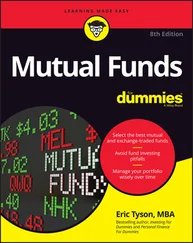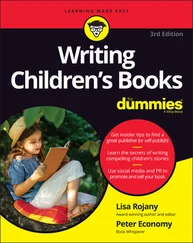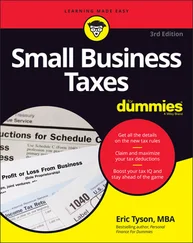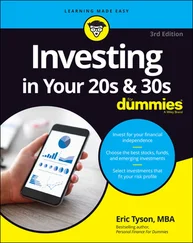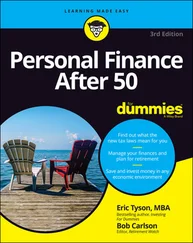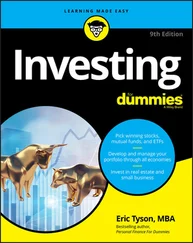Once the material has been fully utilized, the remaining biological content can be directed toward the regeneration of natural systems and the creation of new biological materials. The magical property of biological materials is that they can help grow other materials as a component of compost. Paper pulp can be processed into a nutrient-dense compost to grow more trees, and food waste can be processed to grow more food. When waste is eliminated as a construct, you can start processing materials in a circular manner and waste can be fully eliminated.
 Technical materials are materials that cannot be regenerated. They are finite. Biological materials are materials that can be regenerated over and over again. The adjustments made to any material's lifecycle should reflect this critical difference.
Technical materials are materials that cannot be regenerated. They are finite. Biological materials are materials that can be regenerated over and over again. The adjustments made to any material's lifecycle should reflect this critical difference.
 Beware of greenwashing, or false claims about a product to convince you that it’s beneficial to the environment.
Beware of greenwashing, or false claims about a product to convince you that it’s beneficial to the environment.
Upcycling versus downcycling
Technical materials as well as biological ones can be made into new products that are either more or less valuable than their original use. Glass bottles can be upcycled into more valuable pieces of artwork and shattered to form mosaic art, or they can be downcycled instead to act as an aggregate in a kitchen counter. In either instance, value is created by maintaining the use of the product rather than disposing of it.
Upcycling is a strategy that reuses a product in a way that holds more value than the original product, whereas downcycling reuses a product in a way that holds less value than the original product. Though at first the idea of downcycling a product may seem valueless, downcycling is still advantageous because it’s a better alternative to recycling or disposal. The idea of upcycling or downcycling materials into new products, as a concept, is a critical component of supporting a circular economy. However, if you don't provide the right infrastructure, individuals and institutions won’t have the means to support this strategy of extended use.
Large subcultures of makers — that range of designers, builders, and crafters — are booming around the world, and the spaces they use provide the very infrastructure and tools necessary to promote upcycling and downcycling. By providing access to computer numerical control (CNC) machines, 3D printers, and other technologies, makers now have more power than ever to maximize the value of their products by repurposing them.
Redesigning the Future to Be Circular
Before we can create a circular future, waste must first be rejected as an acceptable component of material lifecycles, and those who manage those material lifecycles need to rethink how materials are managed. Only when we achieve these two critical milestones can the world begin to redesign how our food is grown; how our infrastructure, products, and clothing are managed; and how a circular economy could work for everyone.
Redesigning the food production system to be circular will require shifting away from commercial strategies that are dependent on fossil fuels, pesticides, and artificial fertilizers to a more localized approach that relies instead on permaculture design strategies, developing polycultures rather than monocultures, and utilizing circular production strategies, like aquaponics. (For more detail on the circular economy and food production, see Chapter 15!)
The industrialized method of growing food is extremely wasteful in many ways. It requires the use of equipment that’s dependent on fossil fuels, high levels of harmful chemicals through the use of pesticides and fertilizers, and global shipping networks to deliver all these goods — not to mention the packaging required to preserve the produce. In addition, these methods create large amounts of food waste during the process because this system doesn’t support the recapture and reuse of unused or spoiled produce. Absolutely nothing about linear, industrialized food production supports the idea that waste is an unnecessary component of the food cycle.
By relying on a more localized approach to food production, many sources of industrialized wastes can be eliminated, such as transportation waste and food waste. Utilizing new methods of growing produce can also support the transition from a linear production to a circular one. Technologies such as indoor aquaponics allows for multiple ecosystems to flourish by utilizing the waste of one system to act as a resource for another. In such systems, fish waste acts as nutrients for the plants, and the plants then filter the water for the fish. Mimicking natural ecosystems is the only way we can redesign the food system to be circular.
 The more a food production system mimics the natural world, the more efficient and effective it will be. You don’t see entire fields of single, row crops anywhere in nature. This fact alone is a major red flag.
The more a food production system mimics the natural world, the more efficient and effective it will be. You don’t see entire fields of single, row crops anywhere in nature. This fact alone is a major red flag.
Circular businesses, products, and clothing
Creating a circular economy will require a massive shift in the way we manage and exchange materials and products. Businesses will need to collaborate with their partners to eliminate the need for raw-material extraction. Products will need to be designed to stay in use for longer periods, and the clothing industry — one of the most wasteful industries in operation — will need to make massive adjustments to eliminate waste. To top it all off, adjusting all these variables will require high levels of coordination and partnerships between all stakeholders involved.
Businesses are realizing that the way they operate and the impact they have on the environment greatly impacts their ability to maintain customers. Transitioning from a linear way of producing products to a circular one won’t be necessary only from an environmental perspective, but from a social and economic perspective as well. To minimize the negative impact on the environment, businesses will need to adjust the relationship they have with customers to maximize the value of the products they create. Rather than businesses viewing success as the number of products made per year, they will instead base their bottom line on the number of products kept in use per year. Though waste certainly creates a demand for companies to continue selling new products, eliminating waste doesn’t have to eliminate demand. By maintaining the ownership of a product rather than selling it, new business opportunities emerge in the world of maintenance and repair. Though eliminating waste minimizes the need for new products, it certainly increases the need to service existing products. The circular economy will demand that new business models focus on maintaining products rather than on making new products.
In addition to the relationship that businesses and customers have, the way products are made will also require a major shift. Accepting waste as a component of a product’s lifecycle encourages production processes where the sourcing of the required materials and durability of those materials remain as cheap as possible. Products are designed with planned obsolescence and minimal opportunities for repair for a reason: to encourage the purchasing of new products. However, by eliminating waste as a necessary step in a material lifecycle and shifting business services from product production to product maintenance, products can be designed to last for longer periods.
Читать дальше

 Technical materials are materials that cannot be regenerated. They are finite. Biological materials are materials that can be regenerated over and over again. The adjustments made to any material's lifecycle should reflect this critical difference.
Technical materials are materials that cannot be regenerated. They are finite. Biological materials are materials that can be regenerated over and over again. The adjustments made to any material's lifecycle should reflect this critical difference. Beware of greenwashing, or false claims about a product to convince you that it’s beneficial to the environment.
Beware of greenwashing, or false claims about a product to convince you that it’s beneficial to the environment. The more a food production system mimics the natural world, the more efficient and effective it will be. You don’t see entire fields of single, row crops anywhere in nature. This fact alone is a major red flag.
The more a food production system mimics the natural world, the more efficient and effective it will be. You don’t see entire fields of single, row crops anywhere in nature. This fact alone is a major red flag.